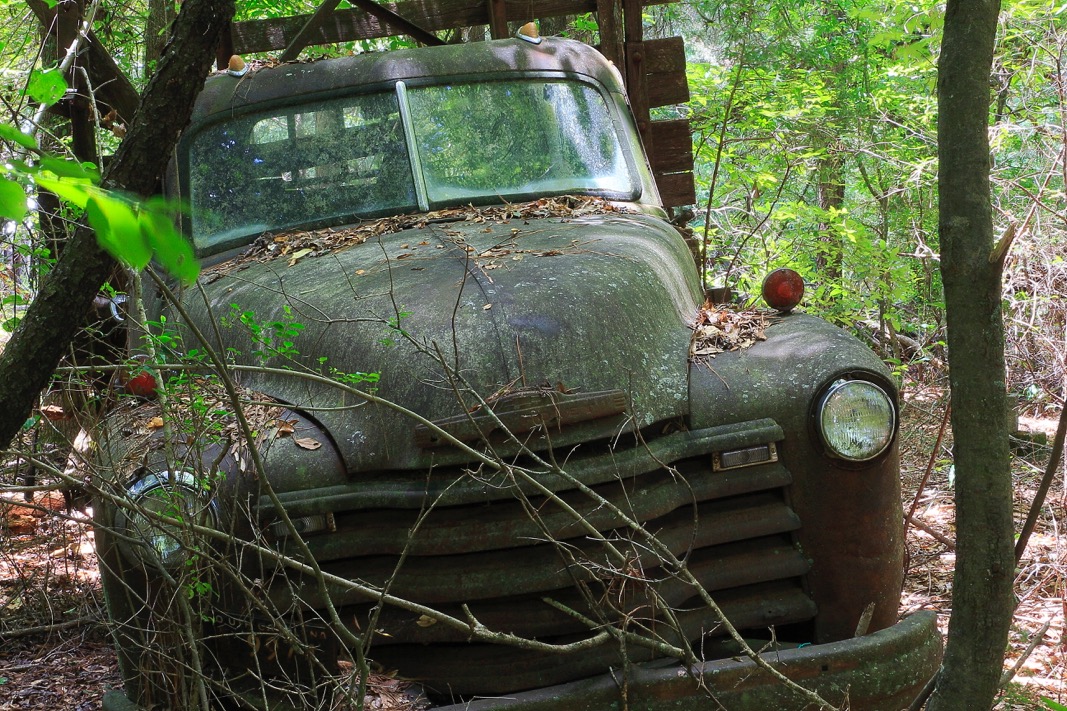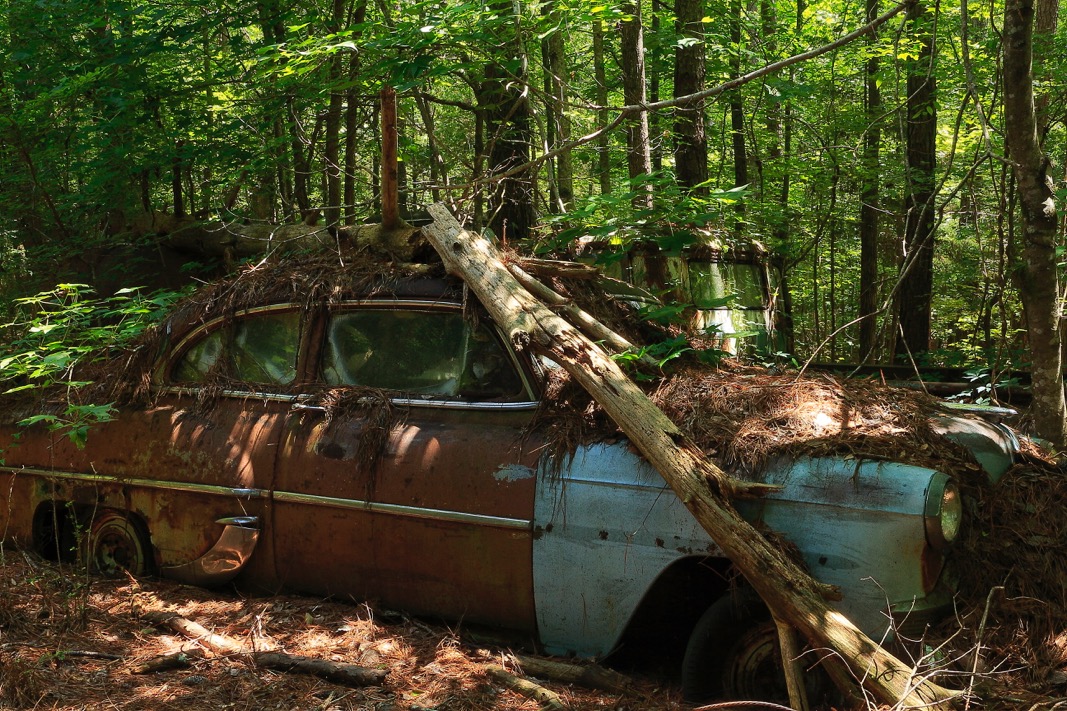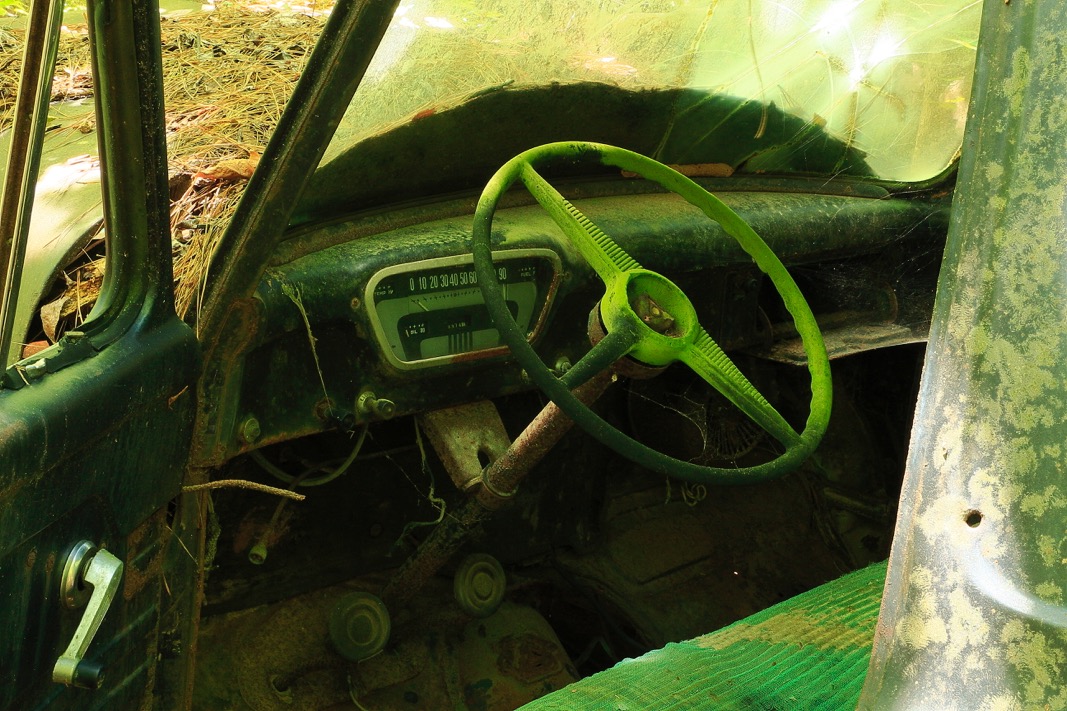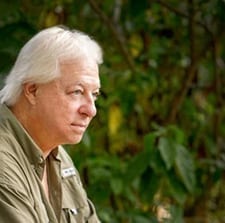The Parking Lot Of The Dead
July 21, 2021By Tom Poland
Even in death they cling to dignity. Left to rust, they bless the rare visitor with awe and mystery. Just how did old trucks and cars end up in a cemetery of sorts, “the graveyard of the rusted automobiles,” as Steve Goodman put it in “The City of New Orleans?” “The parking lot of the dead” as James Dickey wrote in “Cherrylog Road.” We’re not talking junkyards though. We’re talking tree-concealed, vine-covered, limb-fallen abandonment.

Each time I discover a gathering of forsaken cars and trucks it strikes me. How did this potter’s field come to pass? It sets me to thinking. First coming to me is a sense of déjà vu. “I’ve been here before,” I think, and I have. A walk through my granddad’s pasture was a stroll through a minor junkyard. Was it the easy way out? To heck with selling them. Just drag them into the pasture and let mice, wasps, and snakes take up residence. Or did he wrest a water pump, a door, or handful of spark plugs from some?
I’m sure the older generations kept some for parts but I sense something else, and this is where it gets complicated. Could they not part with them? Was some sort of love affair or relationship at work here? After all, it had not been that many years since the cars replaced horses and buggies as some of the ghostly “gone to their maker” owners of the vehicles knew all so well. I have no doubt they loved their miraculous, noisy, fast conveyances. They and their ancestors didn’t put their mules and horses out to pasture. Well, of course they did, but they continued to look after them. Maybe that’s it. The sense of affectionate husbandry they felt for farm animals transferred over to cars and trucks. And we can’t overlook nostalgia.

“That ol’ truck? Took me and my wife to the hospital for our first born.”
“That rusty Chevy? Your granddad died of a heart attack in it.” (It’s true. He did.)
“That back seat? My first. Fell in love there. Yes sir, I did.”
Memories … good and sad.
All these many years later? We take cars and trucks for granted. They’re part and parcel of our lives, giving some needy souls a status symbol, a look at me thing. Things are changing, however, as they always do. Now and then I meet a young person who has no car or truck. “A car? I don’t need one. I Uber.” That’s the new cool taxi-like way to get from A to B.

Some of us would never Uber. We drive and drive. Then, “Well, the miles are high now. Time for a new ride.” We won’t park the old trucks or cars in some bare spot and wait for a forest to overtake them. We trade up for newfangled technology—hybrids, GPS, satellite radio, Bluetooth cell phones, all sorts of safety features, and some of you—not me—can’t wait to have a car that drives itself. Good luck with that.
No, people don’t hang onto ’em like they once did. They trade ’em, hand ’em down to relatives, and such. It pleases me that the also-dead owner-drivers of yesteryear kept their old rides and workhorses. Their parking lots of the dead, their graveyards of the rusted automobiles, left us museums of sorts. Still, so few of us visit them. Every time I come across one awe and mystery well up within me. It’s as if some rusting metal spirit missing an eye of a headlight speaks with a gas-burnt grasp through chrome grills that gleam still.
“Thank you for visiting us. It’s been many years since we’ve had company with one of y’all, a long time since a human touched us. If you come again, I promise you we’ll be here. As you can see our days of drinking gas and rolling and feeling the wind on windshields are long gone, gone with the wind. We sit and sit and sit. Parked forever you could say.”
Visit Tom’s website at www.tompoland.net
Email Tom at [email protected]















